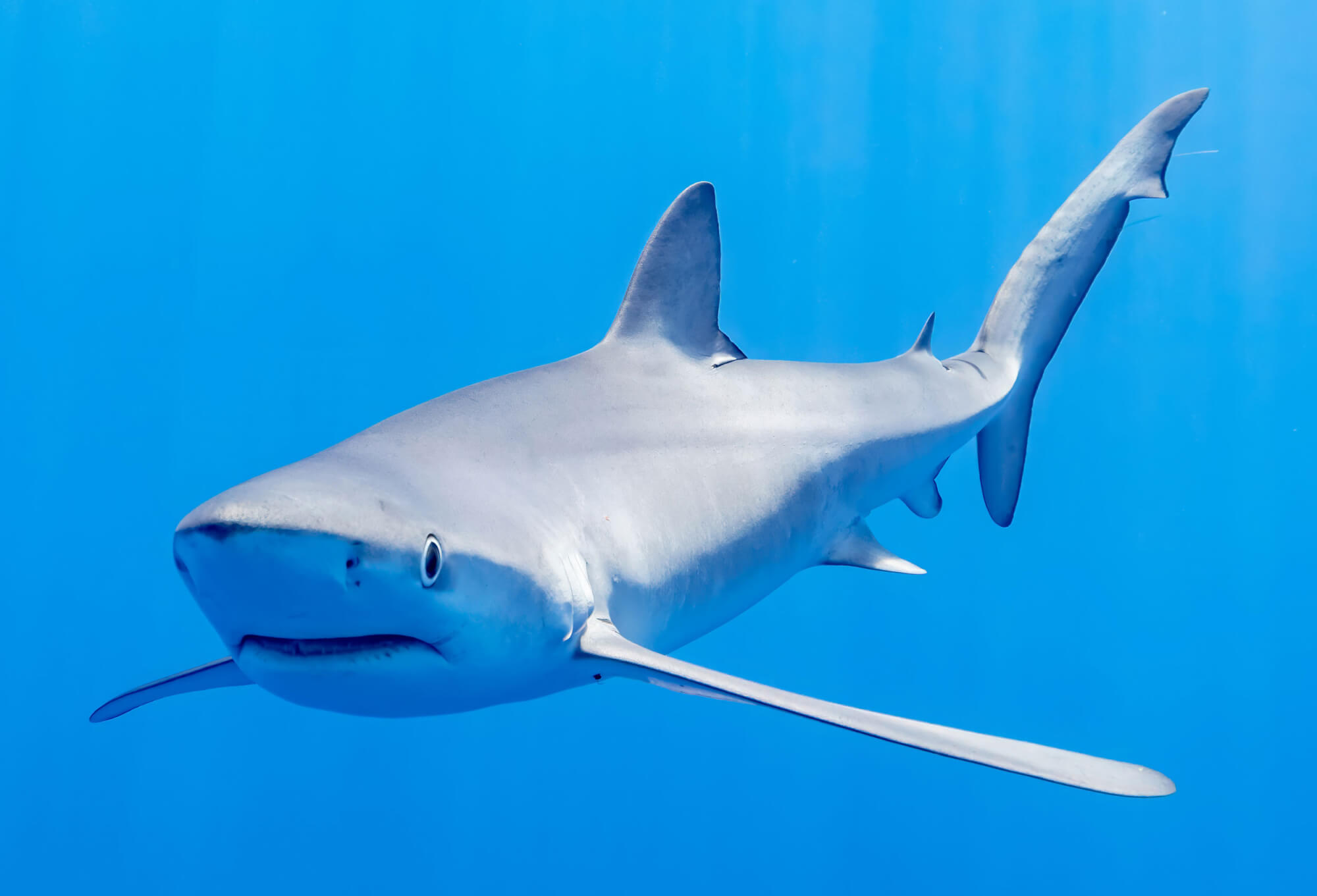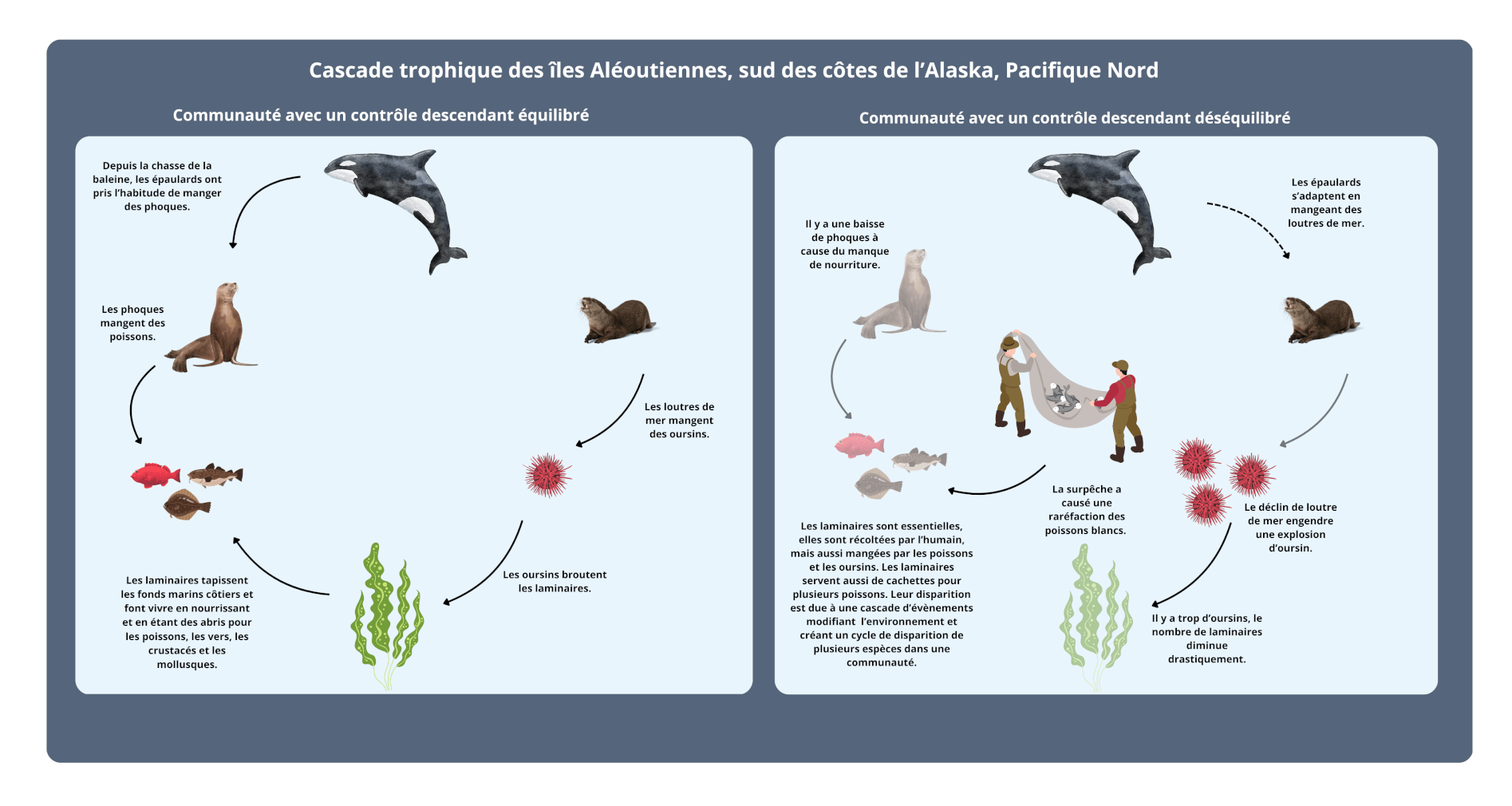Sharks are often imagined as ruthless predators. This extreme representation obscures the complex truth of these marine animals, which are essential to their ecosystems. Far from Hollywood clichés and popular beliefs, sharks play a crucial role in our marine ecosystems, including the waters of the St. Lawrence River. This article aims to shed light on the role of sharks and highlight the efforts needed to ensure their protection. By taking a more balanced view, we can better appreciate the diversity of these marine predators and contribute to the preservation of a rich and fragile ecosystem.
Sharks are not limited to the warm waters of the tropics; in fact, the St. Lawrence is home to approximately 11 different species of sharks! This refuge for these marine predators is threatened, not only by pollution and overfishing, but also by the bad reputation these fish suffer from. Shark attacks on humans, though rare and often attributable to poor judgement, fuel a climate of fear that complicates the conservation of these species.
An ecological perspective
Sharks are present in all the world’s oceans as well as warm tropical waters, temperate seas and polar seas. They are found both near the surface and on the seabed, in nearshore waters and in the high seas. Sharks have been present on Earth for over 450 million years and have outlived five mass extinctions. The trade of shark-derived products, most notably their fins, is a serious threat and is exacerbated by the slow reproduction of these species. According to the International Union for Conservation of Nature, approximately 60% of pelagic sharks are currently endangered. The 11 shark species in the St. Lawrence are considered threatened, with the exception of the chain catshark (chain dogfish), whose population appears to be stable, though data are insufficient.
In Canada, the great white shark has been known for thousands of years by the Mi’kmaq people. Indigenous people recognize the importance of this animal through its relationships with the different species in the ecosystem. Indeed, sharks are key predators for the regulation of food webs, which is why their absence would have enormous consequences for marine ecosystems in all of the world’s oceans.
Keystone species
The structure of an ecosystem’s communities is based on an abundance of species that is both diverse and equitable. This diversity is influenced by elements such as keystone species. These species play a crucial role in profoundly changing the community, even when they are not particularly abundant. They have a significant impact on the entire ecosystem.
When a predator is removed from a community, one might expect the populations of its prey to increase. However, such a loss can also have the opposite effect. Take for instance North Carolina’s Atlantic coast. Overfishing has led to the disappearance of certain species of large sharks. In the absence of these predators, ray populations have exploded. As they increased in number, these rays intensified their predation on clams, causing conflicts with local fishermen who harvest these clams.
Fragile ecosystems
The trophic cascade relates to how predator-prey interactions affect the abundance and diversity of species in an ecosystem. A 1998 report by Estes et al. analyzes a recent trophic cascade phenomenon observed off the coast of southern Alaska. Overfishing has reduced the number of fish, which has led to a decline in the population of the seals that prey on them. Killer whales, which used to feed on seals, then began to hunt sea otters. Since the 1990s, this increased pressure has caused a significant decline in sea otters around the Aleutian Islands. The decline in otters, which feed on sea urchins, has led to an explosion of the sea urchin population. This proliferation of sea urchins has destroyed forests of kelp, giant algae that provide food and shelter for many marine species. As a result, the destruction of kelp has sparked significant changes in the ecosystem, which impacts the various species that depend on it.
A nuanced look at sharks’ vital role
As keystone species, sharks play a crucial role in regulating marine ecosystems. As top predators, they maintain the balance of food webs by controlling mesopredator (the predators located in the middle of the food chain) populations, thus preventing their excessive proliferation, which could degrade habitats and deplete resources. Additionally, by targeting sick or week individuals, sharks promote the survival of more robust individuals, thus contributing to the overall health of marine ecosystems.
As they migrate between deep and shallow waters, sharks provide essential nutrients to oftentimes nutrient-poor coastal areas. For example, grey reef sharks, which are found in the eastern and western Atlantic and Indo-Pacific oceans as well as the Red and Mediterranean seas, carry nitrogen from the depths to shallow coral reefs, where their excrement enriches the ecosystem. This nitrogen feeds thousands of marine species, thereby contributing to reef biodiversity.
The absence of sharks might also impact nutrient cycling in that their excrement provides vital levels of nutrients such as nitrogen and phosphorus, which are fertilizers for marine plants and phytoplankton. Without these nutrients, these organisms would be at risk, leading to dramatic declines in marine ecosystems. When they die, their bodies sink into the ocean depths, trapping this carbon for thousands of years.
Sharks increasingly present in the St. Lawrence
According to Le Devoir, Jeffrey Gallant, director of the St. Lawrence Shark Observatory, and Simon Paquin, executive director of the Écomaris organization, believe that the increased presence of great white sharks might be beneficial for the marine ecosystems of the St. Lawrence. The great white shark, one of the few predators of seals, might play a crucial role in regulating their populations and helping to restore the balance of fish stocks. The Quebec Marine Mammal Emergency Response Network has observed a notable increase in cases of seal predation by sharks. Could this trend lead to significant changes in species diversity in the St. Lawrence?
Together with Fisheries and Oceans Canada, Xavier Bordeleau, a specialist in pinnipeds and predator-prey relationships, is attempting to test this theory.










